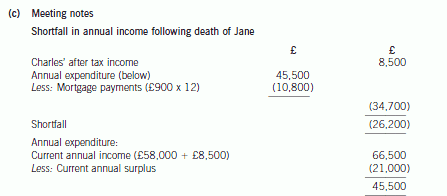Assume that you would like to clone an existing WebLogic Domain and enable some customizations. What scenario would you choose?()
第1题:
170 Assume that you have a network where an activity on the critical path can be crashed by two weeks. If the activity is actually crashed by two weeks, then:
A. The project's schedule will be reduced by 2 weeks.
B. The available slack on the noncritical paths will increase.
C. A new critical path may appear after the crash.
D. All of the above.
E. A and B only
第2题:
Assume that the corporation tax rates for the financial year 2004 apply throughout.
(b) Explain the corporation tax (CT) and value added tax (VAT) issues that Irroy should be aware of, if she
proceeds with her proposal for the Irish subsidiary, Green Limited. Your answer should clearly identify those
factors which will determine whether or not Green Limited is considered UK resident or Irish resident and
the tax implications of each alternative situation.
You need not repeat points that are common to each situation. (16 marks)
第3题:
Assume that you have a network where an activity on the critical path can be crashed by two weeks. If the activity is actually crashed by two weeks, then:
A.The project's schedule will be reduced by weeks.
B.The available slack on the noncritical paths will increase.
C.A new critical path may appear after the crash.
D.All of the above.
E.A and B only.
第4题:
(c) Outline the ways in which Arthur and Cindy can reduce their income tax liability by investing in unquoted
shares and recommend, with reasons, which form. of investment best suits their circumstances. You are not
required to discuss the qualifying conditions applicable to the investment vehicle recommended. (5 marks)
You should assume that the income tax rates and allowances for the tax year 2005/06 apply throughout this
question
第5题:
(c) Without changing the advice you have given in (b), or varying the terms of Luke’s will, explain how Mabel
could further reduce her eventual inheritance tax liability and quantify the tax saving that could be made.
(3 marks)
The increase in the retail prices index from April 1984 to April 1998 is 84%.
You should assume that the rates and allowances for the tax year 2005/06 will continue to apply for the
foreseeable future.
第6题:
(b) Calculate the percentage of maximum capacity at which the zoo will break even during the year ending
30 November 2007. You should assume that 50% of the revenue from sales of ticket type ZC is attributable
to the zoo. (7 marks)

第7题:
(c) Assuming that she will survive until July 2009, advise on the lifetime inheritance tax (IHT) planning
measures that could be undertaken by Debbie, quantifying the savings that can be made. (7 marks)
For this question you should assume that the rates and allowances for 2004/05 apply throughout.
第8题:
Standard "Shewhart" control charts assume that the distribution of sample means is:
A . uniform
B . normal
C . discrete
D . symmetrical
E . B and D only
第9题:
(ii) Advise Benny of the amount of tax he could save by delaying the sale of the shares by 30 days. For the
purposes of this part, you may assume that the benefit in respect of the furnished flat is £11,800 per
year. (3 marks)

第10题:
(c) Prepare brief notes for the proposed meeting with Charles and Jane. Clearly identify the further information
you would need in order to advise them more fully and suggest appropriate personal financial planning
protection products, in respect of both death and serious illness. (9 marks)
You should assume that the income tax rates and allowances for the tax year 2005/06 and the corporation tax
rates for the financial year 2005 apply throughout this question.

When considering the shortfall
– The family’s expenditure is likely to increase as the children get older, particularly if there is a need for school fees.
– There will be a need for some cash immediately to pay for the cost of the funeral.
– It is assumed that the whole of Jane’s estate has been left to Charles such that there will be no inheritance tax on her
death.
– The shortfall may be reduced by:
(i) State benefits and tax credits.
(ii) Expenditure on non-essential items, e.g. holidays and entertainment included in the annual expenditure of
£45,500.
(iii) The income generated by Charles if he were to return to work.
– The shortfall may be increased by additional child-care costs due to Charles being a single parent, particularly if he
returns to work full-time.
Further information required
– The level of state benefits and tax credits available to Charles.
– The current level of expenditure on non-essential items.
– The costs of child-care if Charles were to return to work.
– Details of any wills made by Charles or Jane.
– Whether Charles’ investment properties could be sold and the proceeds invested in assets with a higher annual return.
– Whether there is any value in Speak Write Ltd independent of Jane, such that the company could be sold after Jane’s
death.
Other related issues
– The couple should consider making provision for their retirement via pension contributions or some other form. of long
term investment plan.
– The couple should recognise that there would be significant financial problems if Jane were to become seriously ill. In
addition to the family’s income falling as set out above, its expenditure would probably increase.
Protection products
– Term life assurance
A qualifying life policy would pay out a tax-free lump sum on Jane’s death.
– Permanent health insurance
Would provide a regular income if Jane were unable to work due to illness.
– Critical illness insurance
Would provide a capital sum in the event of Jane being diagnosed with an insured illness.